Cleaning Secrets for Efficient and Quick Floor Cleaning

There’s nothing quite as satisfying as a clean and well-maintained home. Yet, keeping your living space in top shape requires planning, time, and effort. One of the essential aspects of home maintenance is floor cleaning. A clean floor not only enhances the overall appearance of your home but also contributes to a healthier living environment. In this article, we will explore the secrets to efficient and speedy floor cleaning, ensuring that your floors remain spotless with minimal hassle.
I- Planning Your Cleaning: An Essential Step for Efficient Home Cleaning
Cleaning the house is an essential part of our daily lives. To perform this task efficiently and save time, planning is a crucial step. Before you dive into cleaning, you need to decide on the specific area you want to clean and plan it out to avoid revisiting the same spot. Consider the following ways to plan your cleaning efficiently and optimize your time and effort.
1. Determine the Cleaning Scope:
First and foremost, identify the scope of your cleaning. This means you need to decide whether you want to clean the entire house, a specific room, or just a particular area within a room. Clearly defining the cleaning scope helps you focus on specific tasks and avoid wasting time and energy.
2. Create a Task List:
Once you’ve identified the cleaning scope, create a task list. Write down all the specific tasks you need to accomplish to ensure that no details are overlooked. This may include sweeping the floor, dusting, cleaning windows, rearranging furniture, and various other tasks depending on your cleaning scope.
3. Prioritize Tasks:
After you have your task list, prioritize them. This helps you determine which tasks need to be completed first and which can be done later. Prioritizing ensures that important and necessary tasks are given precedence to ensure efficient completion.
4. Organize the Tasks:
Organizing tasks is a critical step in the planning process. Once you’ve prioritized your tasks, organize them in a logical sequence. If possible, arrange tasks so that you can move conveniently from one area to another. For instance, after sweeping the floor, you can tidy up the furniture and then dust to avoid re-soiling the floor after cleaning.
5. Use Appropriate Tools and Products:
Lastly, make sure you use the appropriate tools and cleaning products for the type of task and surfaces you’re dealing with. Choosing the right cleaning products ensures that your work is efficient and effective. Ensure you have all the necessary tools and products in advance to prevent interruptions.
Planning your cleaning is a crucial step in ensuring that you clean your home efficiently and save time. With a specific plan in place, you can work systematically and make sure that your living space is always clean and comfortable.
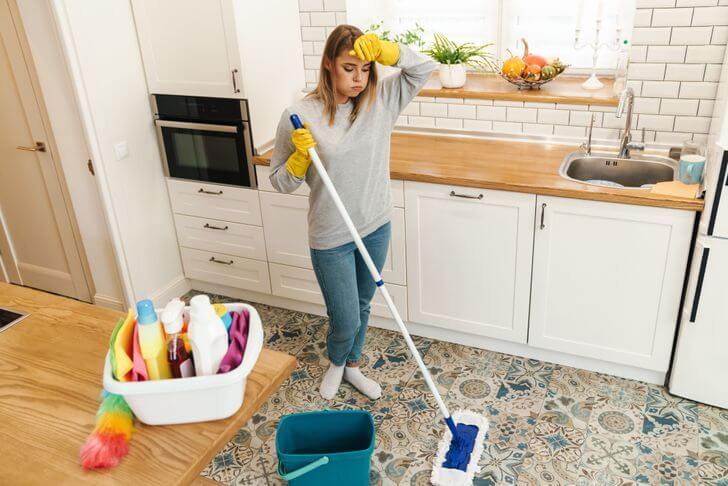
II- Clearing Unnecessary Clutter: The Key to an Organized and Efficient Cleaning Routine
A clean and organized living space not only looks appealing but also contributes to a more peaceful and stress-free lifestyle. While thorough cleaning is an essential part of maintaining a neat home, one often overlooked aspect is decluttering. Before embarking on your cleaning journey, it’s crucial to assess and eliminate unnecessary items. This process not only paves the way for effective cleaning but also creates opportunities for optimizing your living space. In this comprehensive analysis, we will delve into the significance of clearing unnecessary clutter and how it can transform your home into a more organized and inviting haven.
1. The Power of Decluttering:
Decluttering is the process of removing items that are no longer needed or used from your living space. It might include clothing, furniture, gadgets, or knick-knacks that have accumulated over time. While it may seem like a daunting task, the benefits of decluttering are manifold.
2. Aesthetic Enhancement:
One of the most immediate advantages of decluttering is the aesthetic enhancement it brings to your home. Removing items that serve no purpose or are rarely used instantly makes your space appear cleaner and more spacious. The uncluttered environment creates a sense of openness and tranquility, making your living space more visually appealing.
3. Improved Organization:
Decluttering not only results in a tidier appearance but also improves the organization of your home. With fewer items to manage, you can establish better systems for arranging and storing belongings. This optimization fosters a more efficient and streamlined lifestyle.
4. Efficient Cleaning:
When it comes to cleaning, having fewer items to navigate around makes the process significantly more efficient. Clearing away unnecessary clutter allows you to access nooks and crannies that may have been previously obstructed. As a result, your cleaning routines become more effective and less time-consuming.
5. Mental Clarity:
A clutter-free environment has a profound impact on mental well-being. The act of decluttering helps reduce stress and anxiety, as it allows you to let go of the unnecessary and focus on what truly matters. It fosters a sense of control and harmony within your living space.
6. Creating Opportunities:
Decluttering is not just about discarding items; it’s also about creating opportunities for repurposing and reorganizing. Items you no longer need can be donated to charitable organizations, sold to earn extra income, or repurposed for different uses. This eco-friendly approach contributes to sustainability and minimizes waste.
7. Steps for Effective Decluttering:
To embark on a successful decluttering mission, follow these steps:
-
- Set Clear Goals: Determine what areas or rooms you want to declutter and establish clear goals. Having a defined objective will help keep you focused and motivated.
-
- Categorize Items: Sort items into categories such as keep, donate, sell, and recycle. This makes the decision-making process more systematic.
-
- Take It One Step at a Time: Decluttering can be overwhelming, so tackle one area or category at a time. Break the task into manageable segments to prevent burnout.
-
- Evaluate Necessity: When deciding whether to keep or discard an item, consider its utility and emotional attachment. If it serves no purpose or doesn’t bring you joy, it’s time to let go.
-
- Organize Remaining Items: After decluttering, reorganize the items you choose to keep. Invest in storage solutions like bins, shelves, or organizers to maintain an organized space.
8. Sustaining an Uncluttered Lifestyle:
Once you’ve decluttered your living space, maintaining an uncluttered lifestyle is essential. Establish routines for reviewing your belongings regularly and ensure that new items are carefully considered before adding them to your home.
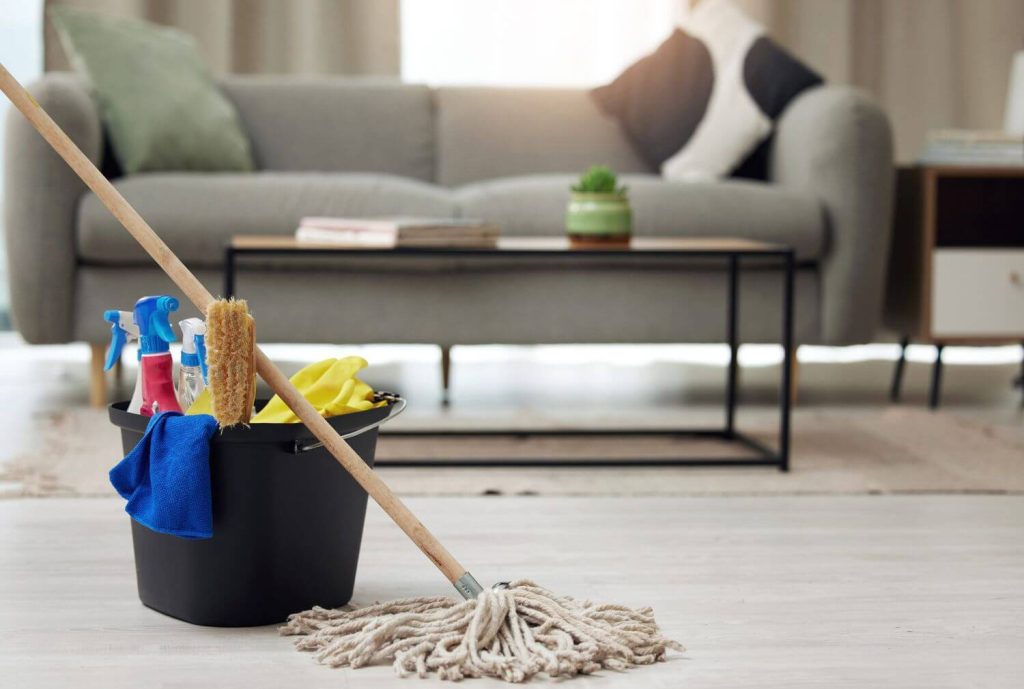
III– Choosing the Right Tools and Cleaning Products for Optimal Cleaning
Effective cleaning is not only about hard work and dedication but also about using the right tools and cleaning products tailored to the specific surfaces you are dealing with. Different types of flooring, such as hardwood, tiles, and carpets, require different cleaning methods and products to achieve optimal results. This comprehensive analysis will delve into the importance of selecting the appropriate tools and cleaning products, and how doing so can save you time, effort, and ensure efficient and effective cleaning.
1. Recognizing the Diversity of Surfaces:
First and foremost, it’s crucial to recognize the diversity of surfaces in your home. Each type of flooring has unique characteristics, and using the wrong cleaning tools or products can potentially damage the surface or lead to subpar cleaning results. It’s essential to differentiate between hardwood, tile, carpet, and other surfaces when planning your cleaning regimen.
2. Hardwood Flooring:
Hardwood floors add a touch of elegance to any home, but they require special care. They are susceptible to water damage, scratches, and discoloration. For hardwood floors, a microfiber mop or a soft-bristle broom is ideal for regular maintenance. Avoid excess moisture and use a wood-safe cleaning solution to maintain the floor’s natural luster. Using inappropriate cleaning products can cause warping, dulling, or streaking on hardwood surfaces.
3. Tile and Grout:
Tiles are popular in kitchens and bathrooms, and while they are durable, the grout between tiles is a magnet for dirt and grime. A pH-neutral cleaner or a specialized tile and grout cleaner is essential for effectively removing stains and preventing mildew growth. Using a stiff-bristle brush can help scrub away dirt from grout lines. Avoid abrasive cleaners that can scratch the tile surface.
4. Carpeted Floors:
Carpets provide warmth and comfort but can be a challenge to maintain. A high-quality vacuum cleaner with adjustable settings is crucial for regular carpet care. Different carpet types may require specific vacuum attachments, so make sure you are using the right one for your carpet. Stains and spills on carpets should be treated promptly with carpet-specific cleaning solutions. Avoid harsh chemicals that can damage carpet fibers or leave behind residue.
5. Selecting the Right Cleaning Products:
The cleaning market offers a plethora of products, but choosing the right one is essential. Before purchasing, read product labels and ensure they are suitable for your type of flooring. Opt for environmentally friendly and non-toxic cleaning solutions whenever possible to maintain a healthy indoor environment. A clear understanding of the product’s ingredients and its compatibility with your flooring is vital to ensure effective cleaning.
6. Tailored Cleaning Methods:
In addition to choosing the right cleaning products, adapt your cleaning methods to suit the type of surface you are cleaning. For example, hardwood floors should be cleaned with minimal moisture, while tiles can withstand more water. Always follow the manufacturer’s recommendations for both your flooring and cleaning products to avoid unintended damage.
7. Routine Maintenance:
Regular maintenance is crucial in extending the life and maintaining the appearance of your floors. Vacuum carpets and rugs weekly, sweep or mop hardwood and tile floors regularly, and address spills promptly. Periodic deep cleaning, such as professional carpet cleaning or floor waxing for hardwood, should be part of your routine.
8. Avoiding Common Mistakes:
Common cleaning mistakes, such as using excessive water on hardwood floors, using abrasive scrubbers on tiles, or failing to spot-test a cleaning product, can lead to unintended damage. Educate yourself about the specific needs of your floors and practice caution to prevent these errors.
Choosing the right tools and cleaning products is a fundamental aspect of efficient and effective cleaning. Different surfaces require tailored cleaning methods and products to ensure that cleaning is both safe and productive. By being informed, adopting the right products and techniques, and committing to routine maintenance, you can protect the longevity and aesthetics of your floors while making your cleaning efforts more efficient and rewarding. Remember that a clean and well-maintained floor is a foundation for a comfortable and welcoming home.
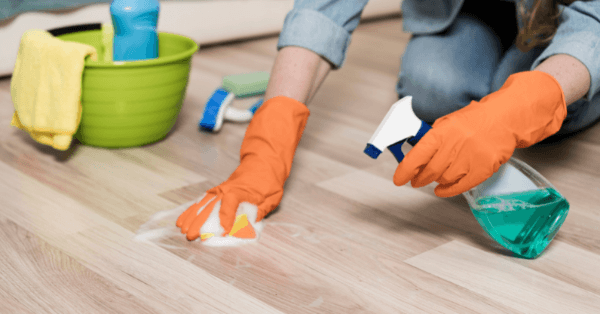
IV– Mastering Effective Cleaning Techniques for Sparkling Floors
Cleaning your home can be a chore, but mastering efficient cleaning techniques can make the task more manageable and even enjoyable. One of the essential aspects of home cleaning is maintaining spotless floors. To achieve this, it’s important to learn effective cleaning methods that cover everything from dusting to wet mopping. In this detailed analysis, we’ll explore various techniques to efficiently clean your floors, ensuring they remain pristine and inviting.
1. Dusting and Sweeping:
The first step in the cleaning process is to remove loose dirt, dust, and debris from your floors. This initial step is crucial to prevent abrasive particles from scratching your floor’s surface during the subsequent wet cleaning.
-
- Dusting: Start by dusting surfaces, especially if you have hardwood or tile floors. Use a microfiber or electrostatic duster to capture fine particles without simply pushing them around.
-
- Sweeping: For larger debris, use a broom or a vacuum with a hard floor setting (if available). Pay special attention to corners, baseboards, and under furniture, as these are common areas for dust and debris to accumulate.
2. Wet Cleaning:
After thorough dusting and sweeping, it’s time for wet cleaning. This phase varies depending on the type of floor you’re dealing with.
-
- Hardwood Floors: For hardwood floors, a damp mop is ideal. Use a microfiber or a flat mop and a wood-safe cleaning solution. Avoid excess moisture, as wood is sensitive to water. Mop in the direction of the wood grain to prevent streaking.
-
- Tile and Grout: Tiled surfaces can be effectively cleaned using a pH-neutral cleaner or a specialized tile and grout cleaner. Apply the solution to the floor and let it sit for a few minutes to loosen dirt and stains. Then, use a scrub brush or a mop with scrubbing pads to remove stubborn dirt. Rinse thoroughly with clean water to prevent residue buildup.
-
- Carpets and Rugs: For carpets, vacuuming is the primary method of cleaning. Use a vacuum cleaner with adjustable settings to match your carpet’s pile. Be thorough, and make multiple passes to ensure all dirt and dust are removed. Spot-treat stains promptly using a carpet-specific cleaning solution.
3. Deep Cleaning:
Periodic deep cleaning is essential to maintain your floors in top condition.
-
- Hardwood Floors: Hardwood floors benefit from occasional waxing. This helps to protect the wood and restore its luster. Always use a wax or polish recommended by your floor’s manufacturer.
-
- Tile and Grout: Tiles and grout can be revitalized with a deep clean. Specialized tile and grout cleaning machines are available for a thorough clean, or you can hire professionals to perform this service.
-
- Carpets and Rugs: Deep clean carpets annually to remove embedded dirt and allergens. You can rent a carpet cleaner or hire a professional service to perform this task.
4. Tackling Stubborn Stains:
Even with regular maintenance, stubborn stains can occur on your floors. It’s essential to have a plan for dealing with these challenges.
-
- Hardwood Floors: Address spills and stains promptly by blotting with a clean, damp cloth. For stubborn stains, you may need to use a wood-safe stain remover. Always follow the manufacturer’s recommendations.
-
- Tile and Grout: For grout stains, consider using a mixture of baking soda and water. Apply the paste to the stained area, let it sit for a while, then scrub with a stiff brush. Rinse thoroughly.
-
- Carpets and Rugs: Treat carpet stains with a specific carpet stain remover. Blot the stain, working from the outside in, to prevent it from spreading. Follow the product’s instructions carefully.
5. Routine Maintenance:
To keep your floors in top shape, develop a routine maintenance schedule. This includes regular vacuuming or sweeping, weekly wet cleaning, and periodic deep cleaning. Make sure to follow the manufacturer’s recommendations for the specific type of flooring you have.
Mastering effective cleaning techniques is crucial for maintaining sparkling floors. Understanding the nuances of different floor types, knowing when to dust, sweep, wet clean, or deep clean, and how to tackle stubborn stains will make your cleaning routine more efficient and rewarding. Clean and well-maintained floors contribute to a healthier and more comfortable living environment, and they are a reflection of your attention to detail and commitment to a beautiful home.
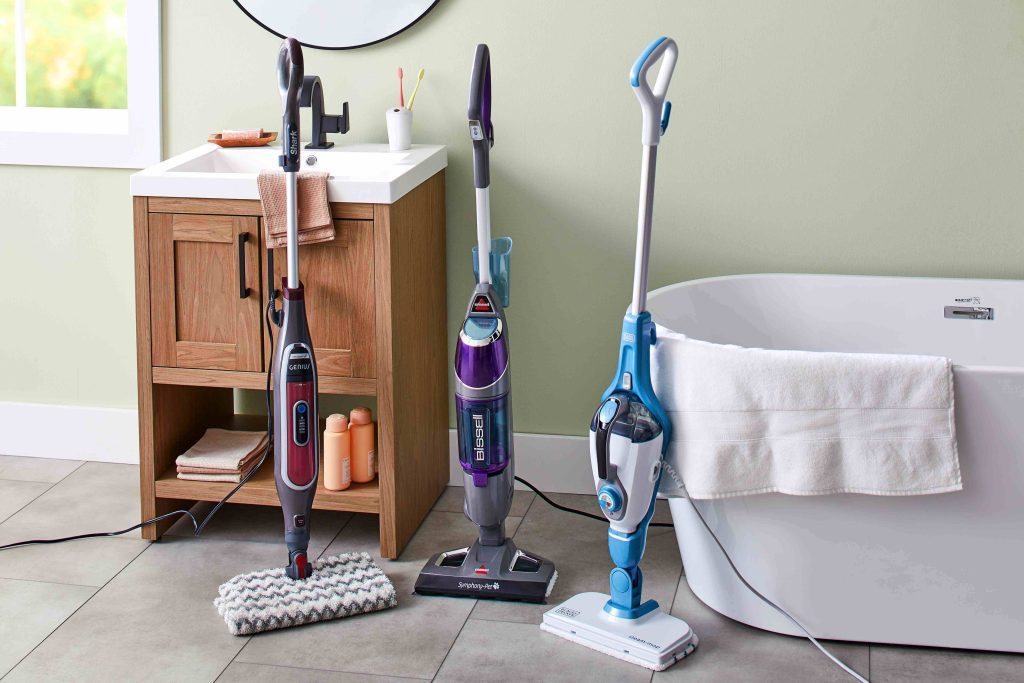
V– Effective Floor Maintenance: Ensuring Lasting Cleanliness
A clean home is not just about the process of cleaning itself but also the maintenance of that cleanliness. After investing time and effort into cleaning your floors, it’s vital to maintain their spotless appearance. This involves establishing a regular cleaning schedule, preventing spills and dirt from accumulating on your floors, and using entrance mats to keep your floors clean for the long term. In this in-depth analysis, we will explore the techniques and practices for sustaining clean floors even after your cleaning efforts are complete.
1. Establishing a Regular Cleaning Schedule:
Consistency is key to maintaining clean floors. Having a regular cleaning schedule ensures that your floors remain spotless and minimizes the need for intensive cleaning sessions. Here are some steps to establish and maintain a cleaning routine:
-
- Daily Maintenance: Implement daily maintenance tasks, such as quick spot cleaning, sweeping, or a brief once-over with a microfiber mop or vacuum. This prevents dirt and debris from accumulating and makes it easier to keep your floors clean in the long run.
-
- Weekly Cleaning: Set aside time for a more thorough cleaning once a week. This includes tasks like wet mopping, vacuuming, and dusting. The frequency may vary depending on the type of floor and your household’s needs.
-
- Monthly Deep Cleaning: Perform deeper cleaning, such as waxing or resealing, on a monthly basis. This is essential for hardwood and tile floors to maintain their appearance and protection.
2. Preventing Spills and Dirt Buildup:
Preventing spills and dirt from accumulating on your floors is crucial for long-term cleanliness. Here’s how you can minimize the potential for dirt buildup:
-
- Use Coasters and Mats: Place coasters under cups and glasses to prevent water rings on wooden surfaces. In the kitchen, use rugs or mats in front of the sink and stove to catch food spills and splatters.
-
- Shoes Off Policy: Encourage a “shoes off” policy in your home. Designate an area near the entrance for removing shoes to prevent dirt, dust, and outdoor debris from being tracked onto your floors.
-
- Prompt Cleanup: Deal with spills and accidents immediately. The longer a spill or stain remains, the more difficult it becomes to clean. Have a designated cleaning kit on hand to address spills as they occur.
3. Utilizing Entrance Mats:
Entrance mats serve as the first line of defense in keeping your floors clean. Placing mats at entryways helps trap dirt and moisture from shoes, preventing them from spreading throughout your home. Here are some tips for using entrance mats effectively:
-
- Size and Placement: Choose mats that are appropriately sized to cover the width of the entrance area. Place one mat on the outside and another on the inside to maximize dirt and moisture removal.
-
- Regular Cleaning: Mats can become dirty and saturated over time, reducing their effectiveness. Periodically clean and shake out entrance mats to ensure they continue to perform well.
-
- Rotation: Have several mats on hand to rotate as needed. This not only extends the life of the mats but also ensures you always have a clean, dry mat available.
4. Spill Cleanup Kit:
Prepare a spill cleanup kit to address accidents promptly. Include essentials like absorbent cloths, a mild cleaning solution appropriate for your flooring, a spray bottle, and a soft-bristle brush for scrubbing stubborn stains. Keep this kit in a readily accessible area.
5. Periodic Deep Cleaning:
While regular maintenance is vital, don’t neglect the importance of deep cleaning at periodic intervals. Depending on your floor type, this may involve waxing, sealing, or professional cleaning. These deep cleaning tasks refresh your floors, extending their life and maintaining their appearance.
Maintaining the cleanliness of your floors goes beyond the initial cleaning process. By establishing a regular cleaning schedule, preventing spills and dirt accumulation, using entrance mats effectively, and having a spill cleanup kit ready, you can ensure long-lasting cleanliness and the continued beauty of your floors. Sustaining a clean home is not just about the end result; it’s a commitment to a healthier and more comfortable living environment.
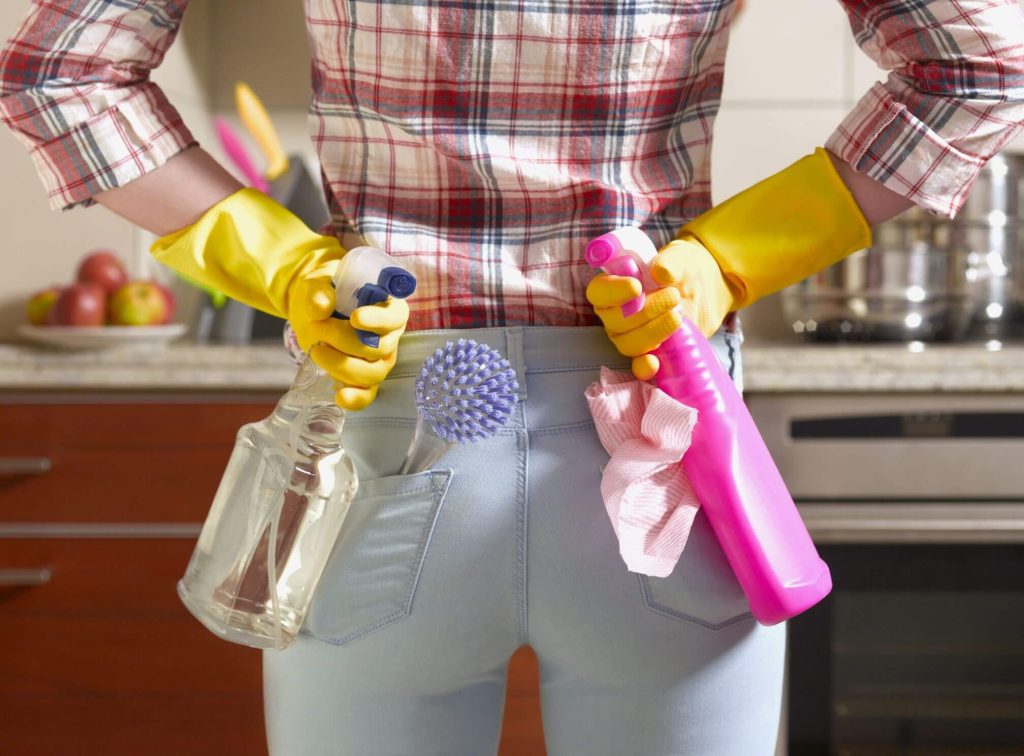
VI- Enjoy Your Clean Space:
Efficient floor cleaning methods provide you with a spotless and inviting living space. Regular maintenance keeps your floors looking their best, and following these secrets for efficient cleaning will save you time and effort while achieving the desired results.
By adopting these floor cleaning secrets, you can maintain a clean and healthy living environment without the hassle of extensive cleaning sessions. Your home will be more inviting, and your floors will stay beautifully clean, enhancing your overall quality of life.
Source: Compiled from the Internet.
